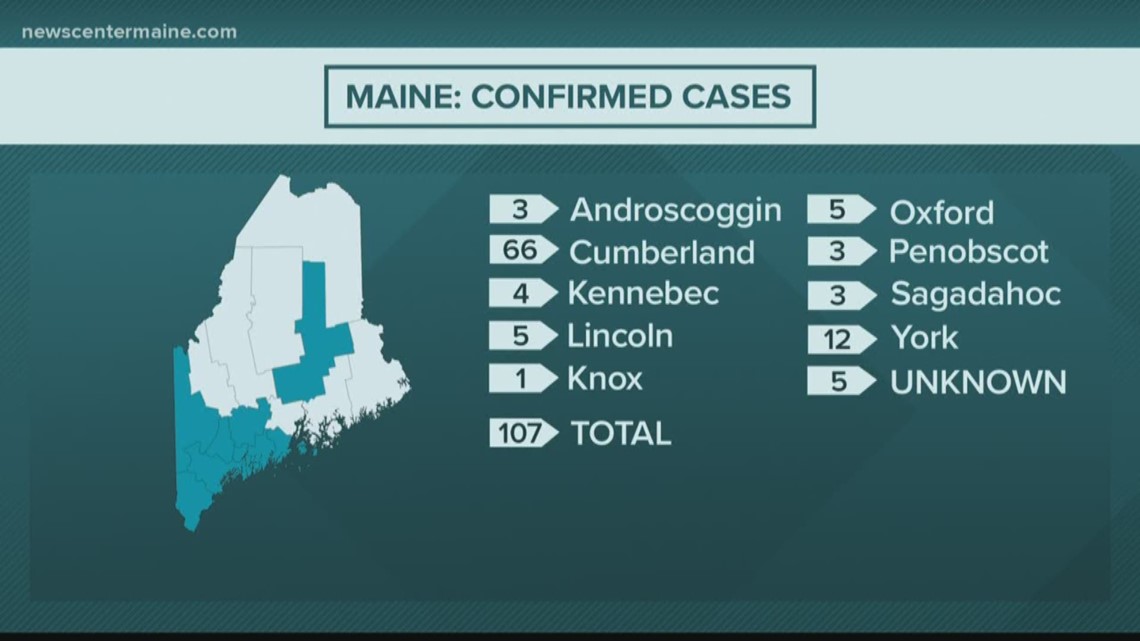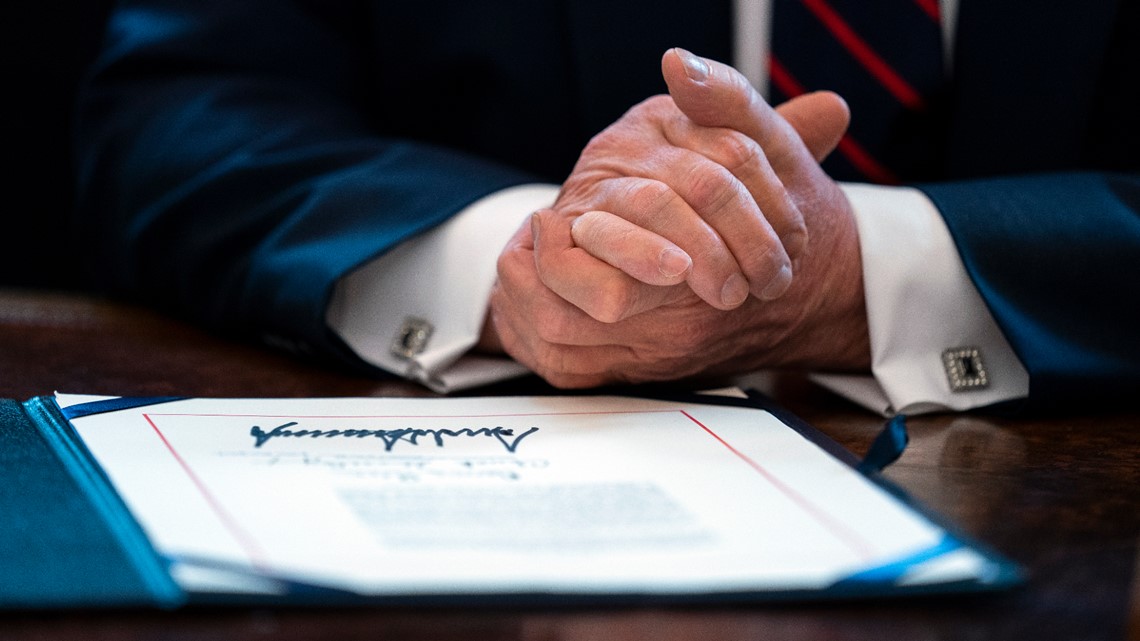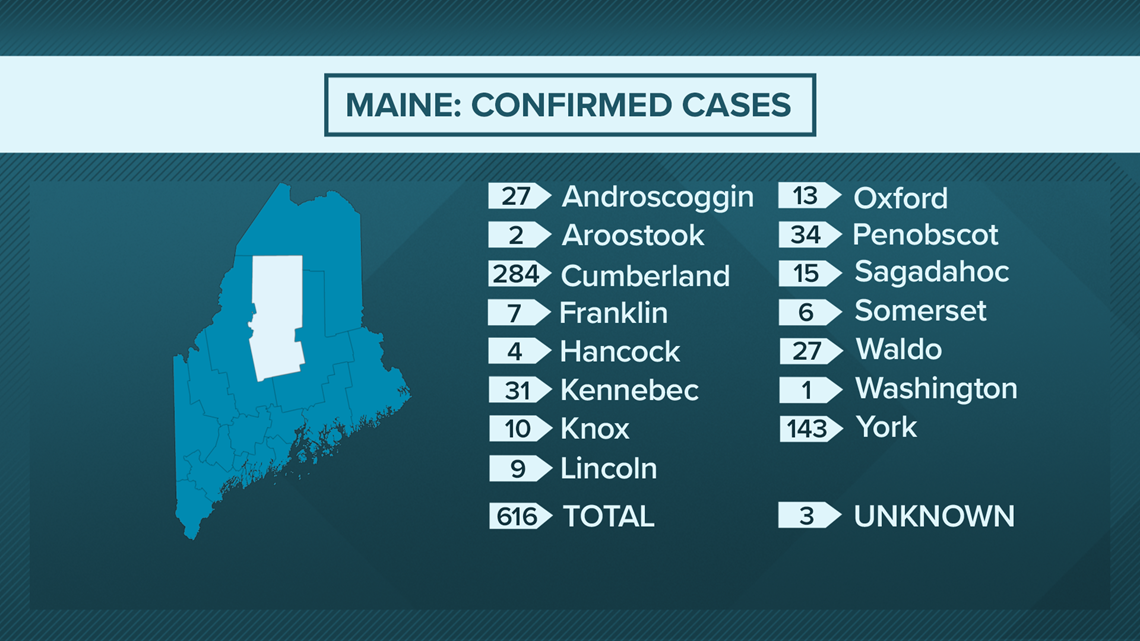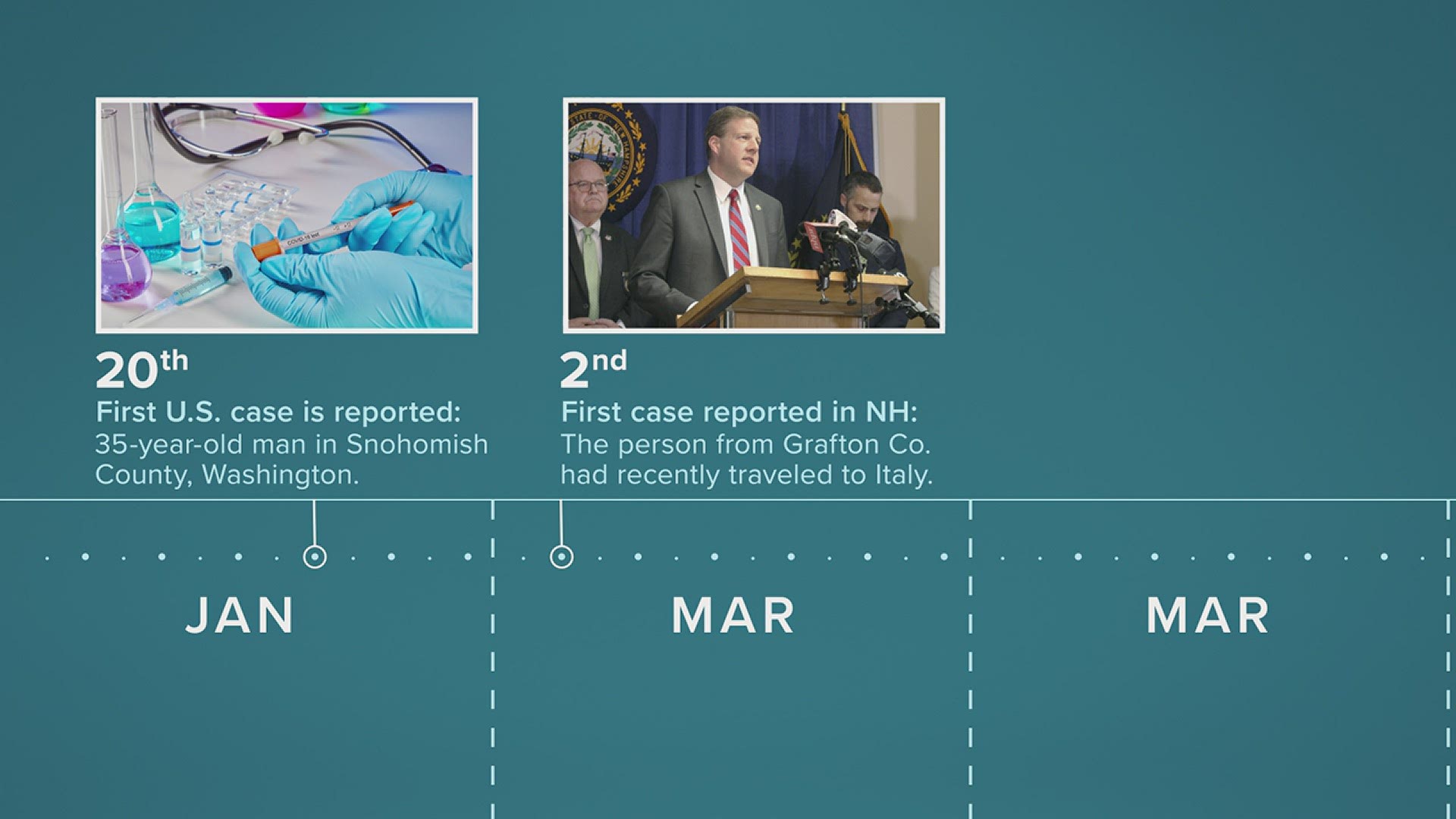MAINE, USA — The outbreak of the coronavirus began in Wuhan China back in December, and since sickened more than one million people around the world. In Maine, the unrelenting journey officially began on March 21, and has changed day-to-day life as we know it.
Here is a timeline key events:
Jan. 11—China reports first death
A 61-year-old man in China is the first known death from the novel coronavirus. The man who died had been a regular customer at the market in Wuhan, China and had preexisting conditions.
Jan. 20—First case in the U.S.
A 35-year-old man in Snohomish County, Washington becomes the first confirmed case of the coronavirus in the United States. The man had recently returned to Washington state from Wuhan.
March 2—First case reported in N.H.
New Hampshire’s first reported case of the coronavirus was a hospital employee from Grafton County who had recently traveled to Italy. Despite being told to stay isolated, officials said the person went to an event tied to the Dartmouth business school. A second person who had direct contact with them tested positive shortly after.
March 11—Coronavirus declared a pandemic
The World Health Organization (WHO) officially declared the coronavirus a pandemic as worldwide cases reached 118,000 and more than 4,000 had died. The ‘pandemic’ label did not automatically trigger specific actions other than underscoring the seriousness and need to step up the fight.
March 12—First case reported in Maine
Maine becomes the 43rd state to have a positive case of COVID-19. The person was a U.S. Navy Reservist who lives in Androscoggin County. "The Maine CDC has been preparing for this eventuality since the end of last year,” Mills had said following the news. “With one presumptive positive case, Maine has a unique window of opportunity to delay an outbreak, like those we see in other states, and to minimize our exposure.”


March 13—Trump declares national emergency
President Donald Trump officially declares coronavirus a national emergency and makes federal fund available to states and territories to fight the coronavirus.
March 15—Maine state of emergency
Gov. Janet Mills declares a state of emergency due to the rapid spread of the coronavirus in Maine. At this time, there were seven confirmed cases in the state and community transmission was identified in Cumberland County. Mills recommended ending in-person classroom instruction and postponing events with 50 or more people among others.
March 17—Unemployment surge


In a three-day span from Sunday, March 15 to Tuesday, March 17, 4,900 Mainers filed unemployment claims with the state. According to state data, that's nearly double the monthly total from last year and the single-highest weekly total since the Great Recession. Gov. Mills’ emergency coronavirus legislation passed in the legislature, which included an emergency unemployment bill that would temporarily extend unemployment eligibility and flexibility for Mainers.
RELATED: If you lost your job due to coronavirus COVID-19, here's how to file for unemployment in Maine
March 18—Gathering bans
Gov. Mills signs an Executive Order banning dine-in service at restaurants and bars and gatherings of 10 or more statewide.
RELATED: Gov. Mills bans dine-in service at restaurants, bars and gatherings of 10 people or more statewide
March 23—Maine cases pass 100
Maine CDC announces 107 confirmed cases of COVID-19. Community transmission was confirmed to be present in Cumberland County.


March 24—Non-essential businesses order
Gov. Mills orders all public-facing non-essential businesses must close. Mills said non-essential businesses and operations could continue if they didn't allow in-person contact, didn't allow more than 10 workers to convene where social distancing isn't possible, or if employees could work remotely.
March 26—U.S. leads in cases
The U.S. surpasses China and Italy officially becoming the hardest hit country in the world with 85,707 cases. The number of deaths in the U.S. reaches 1,268.
March 27—First death in Maine
A man in his 80s from Cumberland County dies from COVID-19, marking Maine's first death from the virus. At this point there were 168 confirmed cases in 11 of Maine's 16 counties. “This is a sad day for the State of Maine. I know I join countless people in extending my condolences to his family, friends, and loved ones during this difficult time,” Gov. Janet Mills said in a statement. “Our state is a family. And while we mourn the loss of a member of our Maine family today, I find strength and solace in knowing that we will support one another and that, together, we will get through this.”
March 27—Trump signs stimulus bill
The unprecedented $2.2 trillion economic relief package, which passed in the Senate and House days before, is officially signed into law by President Trump. The package will support businesses, rush resources to overburdened health care providers and help struggling families during the deepening coronavirus epidemic. As he signed the bill, Trump declared it “will deliver urgently needed relief.” He thanked members of both parties for putting Americans “first.” The bill will send $1,200 checks to most Americans, plus an extra $500 for each child.


March 31—Statewide ‘stay-at-home’ order
Gov. Mills issues a statewide ‘Stay Healthy at Home’ order that requires people living in Maine to stay at home at all times unless for an essential job or an essential personal reason, such as obtaining food, medicine, health care, or other necessary purposes. Mills also enacted stricter restrictions including banning use of public transportation unless essential, and mandated remote learning until at least May
RELATED: How ‘stay-at-home’ orders and gathering bans due to coronavirus are being enforced in Maine
April 2—1 million cases
The coronavirus pandemic hits a grim milestone with 1 million cases worldwide. There have been 51,000 deaths globally. Nearly a quarter of the cases are in the U.S., and about half are in Europe.
April 3—Traveler quarantines
Gov. Mills orders all travelers coming to Maine must quarantine for 14 days. Only some workers for essential businesses are exempt from the requirement. “To slow the spread of this deadly virus and prevent our health care system from being overwhelmed, we must all do our part,” Governor Mills said. “I am mandating that anyone entering Maine self-quarantine for 14 days and abide by Maine’s Stay Healthy at Home Order. These actions will protect the health and safety of everyone.” The order says law enforcement is authorized to enforce it.
April 11—Maine cases surpass 600 mark
The Maine CDC reported 19 deaths and 616 confirmed cases of COVID-19. There have been 256 recoveries and 114 hospitalizations.


At NEWS CENTER Maine, we’re focusing our news coverage on the facts and not the fear around the illness. To see our full coverage, visit our coronavirus section, here: /coronavirus

